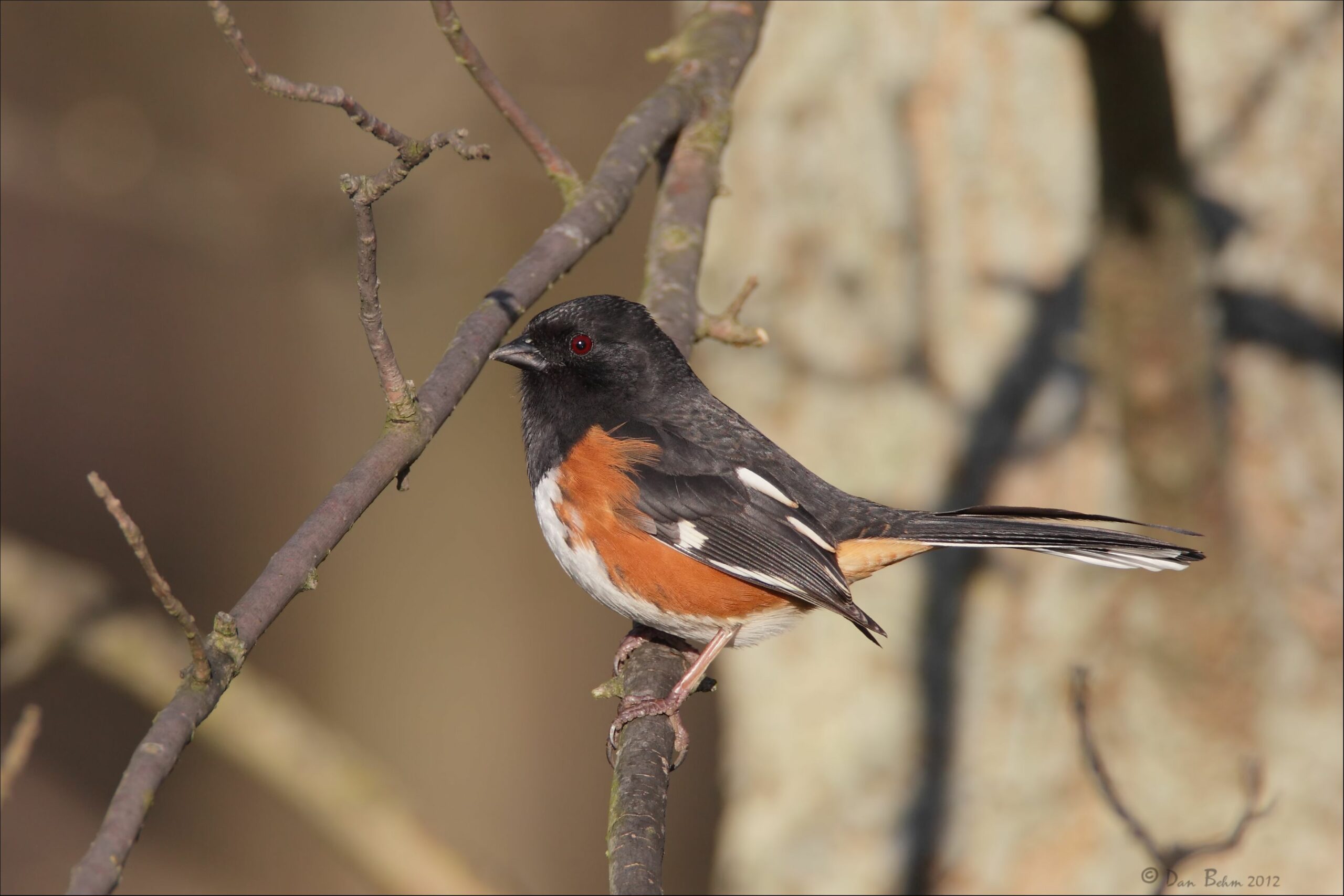What is April? Is it a transition month, in between winter and spring? Is it full-on spring? I find the weather patterns to be interesting this month. Just two weeks ago in south-central Michigan, it was feeling quite summery — time for wearing shorts and no jacket; just two days ago, it felt like winter with temperatures in the upper 20s and quite the wind chill. In northern Michigan, our Whitefish Point Bird Observatory field staff are reporting winter weather: snow, wind, and not much in the way of migration movements.
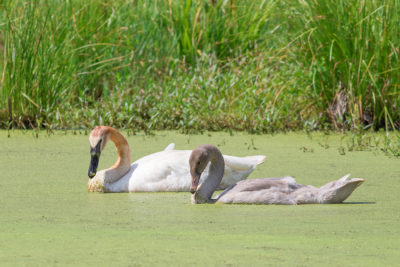
Trumpeter Swans at Bernard W. Baker Sanctuary by Jerry Engelman
Signs of spring are coming, though. Spring peepers are peeping in full force, wood frogs are croaking, and trout lilies are sending up first leaves. Hepatica leaves have been a fun find the past couple of weeks (in southern Michigan). Migrating birds keep me on my toes: What can I expect to see the next time I go for a walk or look at my bird feeders? An Eastern Towhee surprised me at the end of March. At a visit to wetland habitat, I was excited to see a huge flock of Tree Swallows (more than 250!) and waterfowl dressed in their spring best — Blue-winged Teal, Northern Shoveler, Green-winged Teal, Gadwall, and Wood Ducks. Recently at Bernard W. Baker Sanctuary (Calhoun County), I saw and heard the resident pair of Trumpeter Swans circling together before they landed on the pond where they have nested for several years. While checking nest boxes for maintenance needs, there was evidence of a new start to an Eastern Bluebird nest: an inch-high circle of grass at the bottom of the box, which was not old and squashed from the previous season.
Birds that spend the winter in Michigan, such as Northern Cardinal and Tufted Titmouse, are singing from the pre-dawn hours throughout the morning, setting up their invisible (to us) territory boundaries and attracting mates.
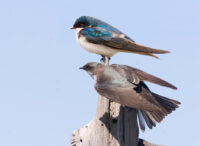
Tree Swallow. Photo by Marlin Greene | APA
Do you consider yourself a beginning birder? Or perhaps you’re an expert but want to brush up on your birding skills before the rush of May migration and warbler season. I, too, as a long-time birder, take time each spring to revisit bird song recordings, both in anticipation of the excitement to come but also because I genuinely enjoy learning (or relearning, as the case may be).
How does one begin? I recommend starting by simply going outside or looking outside your window. Make some observations. Some key aspects will help you to identify a bird to species: shape and size, coloration (plumage), behavior, and habitat the bird is using.
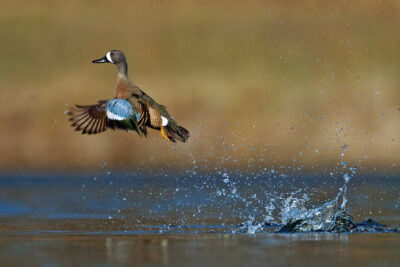
Blue-winged Teal. Photo by Josh Haas
Here are some prompts to help you observe birds fully (and remember that you don’t have to identify each bird — simply start by noting something):
- What do you see?
- What do you hear?
- What is the bird’s shape and size?
- Does it have feathers on its head that form a crest?
- Does it have a long or a short tail?
- What does its bill (beak) look like — is it triangular and very heavy/strong looking? Does it have a tiny, slim bill? Bill shape can help you to understand what the bird typically eats, whether it’s a seed-eater with a conical bill, a woodpecker with a bill that can hammer into tree bark, or if it’s a kinglet with a tiny bill best for picking tiny insects out of crevices or from leaf buds.
- What color is the bird’s plumage (its feathers)?
- What patterns do you observe? Does the bird have one color of feathers all over its body, or does it have some distinct marks, such as wing bars or spots on the breast?
- What type of habitat is the bird using? If it’s using wetland or open water, you can narrow down your identification and not include forest birds, for example.
- Behavior is important as well. Is the bird soaring high above you, or is it hovering and visiting flowers to drink nectar in your garden?
I recommend jotting some notes down in a small notepad you carry with you and making a rough sketch — these will help you learn and understand more about the birds you are viewing each time you practice.
Start here — with making observations, and next month we will put some of these observational skills into practice with a few different species.
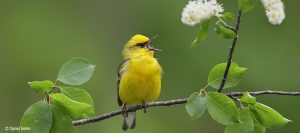
Blue-winged Warbler. Photo by Daniel Behm
In addition to building from our observations, next month, we will focus on warbler identification tips, as this can be both an exciting and frustrating time of year for many birders. Get ready to learn about warblers by watching this short video on what to notice on a warbler and reading this article on identifying warblers. We will be discussing behavior, vocalizations, plumage, habitats, and more about warblers in the May Michigan Birding Highlights!
Bottom line (in my humble opinion): Get out early* and often, and go with a friend or other birders, to learn from and help each other, and to share your excitement and experiences!
Happy April birding!
~Linnea Rowse, Michigan Audubon conservation program coordinator
*Note: by “early,” I don’t necessarily mean early in the day, though dawn chorus is a beautiful thing to hear; I mean for you go birding sooner rather than later. You won’t regret it.
Featured photo: Eastern Towhee by Daniel Behm
Resources to help you find birds during migration, learn about identification, and more:
- Birdcast: Live bird migration forecasts with predicted migration movements and real-time bird migration movements.
- eBird: A community science tool for collecting data on birds, with your lists of birds contributing to scientific analyses. These may include broad-scale migration patterns and models for predicting bird species’ presence in an area or population trends over time. Your data are important! And what’s more, it’s a really cool way to keep track of birds you see in your favorite birding locales. You can even sign up for email alerts for species you want to see or need for your county or your year list.
- All About Birds: Build your skills with these four keys to bird identification.
- Bird Academy Play Lab: Learn about birds while having fun — interactive learning modules about flight, song, behavior, feathers, and more!
- Merlin Bird ID: Instant bird identification help!

